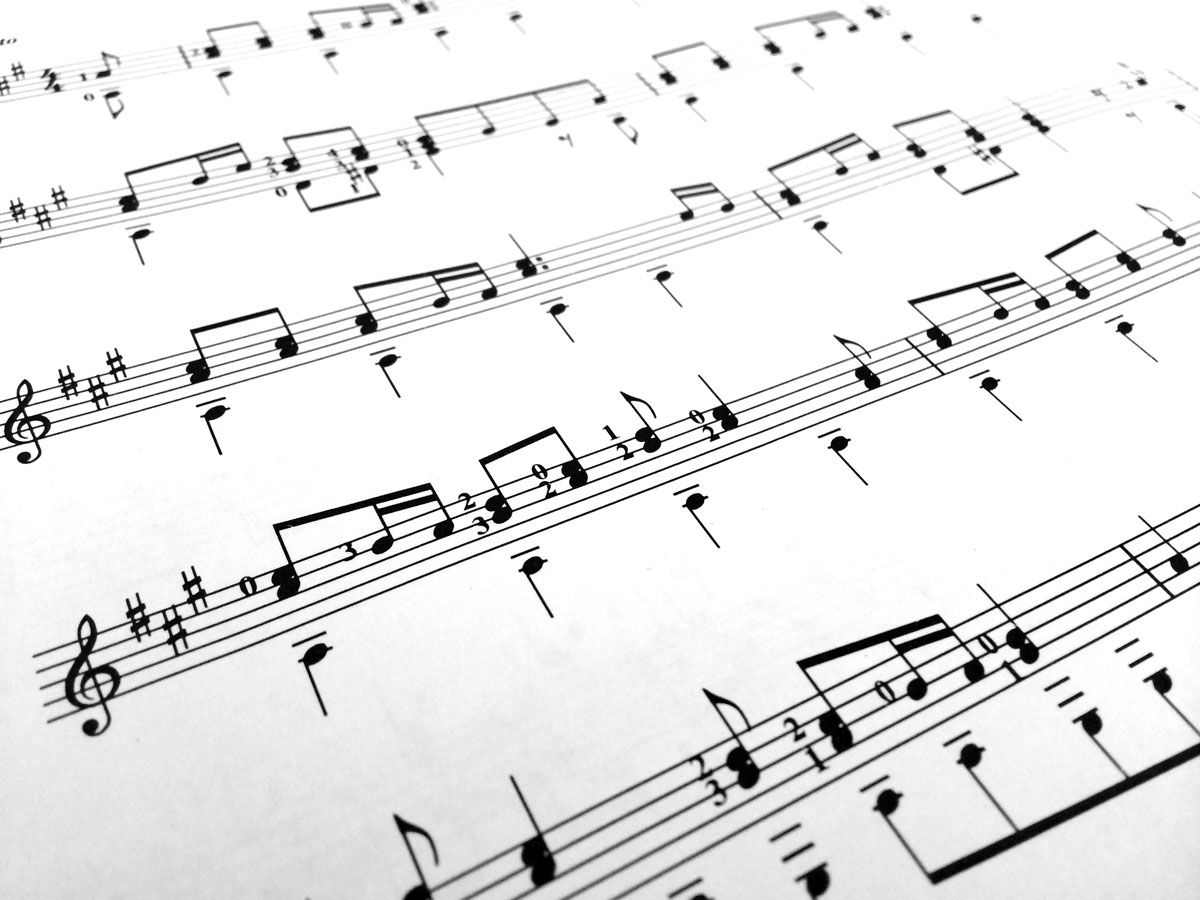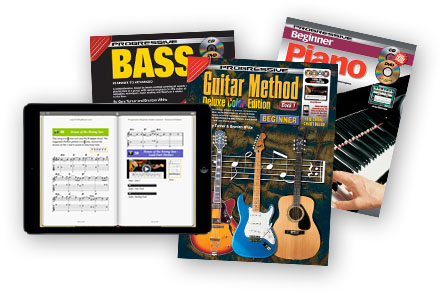Knowing how to read music is a valuable skill for anyone involved in music composition, songwriting, performance, teaching, recording and production. Many instrumentalists are adept at sight-reading, which is the ability to play directly from a written score. However, a basic-to-intermediate-level reading ability will still help you to grasp the overall structure of a piece, what the key is, its level of complexity, tempo and timing, dynamics and many other musical details. This will allow you to better understand and communicate with other musicians, given you also understand the vocabulary and can follow along with the music.
Once you have the fundamentals down, a great way to learn how to read music is to get hold of some music scores (classical, jazz, and pop scores if possible) and try to follow along with the recordings. This will be easier if you know a musician or teacher who can help you to follow along at first. Scores can be found at traditional music stores and online sheet music retailers. If you’ve never read music before, let’s get started with some basics. The following information comes from Progressive Theory, available online.
The Musical Alphabet
The musical alphabet consists of 7 letters:
Each letter represents a music note. These notes are written on a staff, which consists of 5 parallel lines. Notes are written on these lines and in the spaces between them.
The Treble Staff
A staff with a treble clef written on it is called a treble staff:

The notes on the lines and spaces on the staff are named alphabetically as shown below. Each new note is said to be higher or lower in pitch than the one before it or after it.

The head of a note indicates its position on the staff, as shown:
When the note head is below the middle staff line the stem points upward and when the head is above the middle line the stem points downward. A note placed on the middle line (B) can have its stem pointing either up or down.
Notes on the Treble Staff
Notes on the Bass Staff

The following staff has notes written on the lines and in the spaces of the bass staff in random order. Using a sheet of paper, copy the following notes and write the note name above each one. This will help you to test your note name knowledge, and improve sight reading.
The Grand Staff
When the treble and bass staves are joined together by a line and a bracket, they are called a grand staff. Piano and keyboard music are written on the grand staff.
Bar Lines
In most music, bar lines are drawn across the staff, which divides the music into sections called bars or measures. A double bar line signifies the end of an important section of music, while a final bar line is written at the end of a piece.
If you’ve enjoyed this introduction to reading music and would like continue further, we recommend you check out Progressive Theory, available online now.
Who is LearnToPlayMusic.com
LearnToPlayMusic.com is the world’s leading music education innovator and publisher of print, eBooks, apps and online lessons.
– Continue learning with Learn To Play Music at LearnToPlayMusic.com









































I found this article very clear and concise when sharing the fundamentals of how notation is arrange. As a guitarist this would be helpful if I knew absolutely nothing about Standard Notation. On the other hand if I want to actually play a song written in standard notation on the guitar, there is no help or guidance. It doesn’t show me how to find the notes on the fretboard or say anything about the concept of key or time signature.
Hi Matthew, Thank you for your feedback! This blog post is aimed at absolute beginners who have never tried to read music before, regardless of the instrument they play. Be they choir leader, pianist, guitarist, songwriter etc. We are always working on expanding our library of blog posts, and will be sure to include more advanced articles on reading music, specifically for guitar, in the near future.
I learned to play without learning to read music. Knowing how to read would have helped a lot though
Thank you, I have never had any lessons in music, it has always been a mystery to me.
Till I found this easy to follow site.
I am teaching my self how to play the ukulele and from the learn play the ukulele lessons I found the how to read music.
I am 83 years old and this has opened up a wonderful new field of interest and appreciation.
Good on you Jack!
Nice article for beginners.
Every music student should learn how to read and write music
We agree wholeheartedly Saetu – it’s such a beautiful language that crosses all barriers in a world with so many divisions.
I’m a piano player and I find that learning how to read music is one of the best ways of improving my piano playing skills. This takes me lost of time and hard efforts for practicing. When you learn this skill, an interesting way is to play duet with your friend pianist.
Thank you for this article. I loved it. I am 68. I have loved listening to music since I was a kid. This morning I decided to learn to play music. I think learning to read music will be the most effective way to begin, as I want to be able to compose music also. Of course I searched online and immediately came upon this site. I am a fan already. I ordered Progressive Theory and am anxiously awaiting its arrival. I want to learn to play guitar, piano, and maybe a wind instrument. Thanks again!
Awesome Dave. Good for you – it’s never too late to start and if you love listening to music then you’re well on your way. Now you just need to put in the initial practice time to learn a few basic skills on the instrument of your choice and then the rest will become easy… We strongly recommend you start with just one instrument to begin with and be sure to practise a little every day. Piano or guitar are good choices with piano being easier to get started on. Don’t over do it and give it time. Each night as you sleep you’re brain will begin to re-organise itself to enable your fingers to do what you want them to and before you know it you’ll be making sounds that you enjoy.
The book Progressive Keyboard along with the free videos is just fantastic for a 54 year old like me. I took my sons to keyboard lessons and I sat there watching them. Now they have gone their ways and I have dusted their keyboard off and started playing myself and this book is the best I’ve come across till date. Thanks and thanks.
When I first started , I didn’t even know a b c d e f g and couldn’t comprehend a scale .. then I bought you book guitar for beginners … this was over 20 years ago .. I wanted to thank you for publishing that book and giving me a lifetime of music .